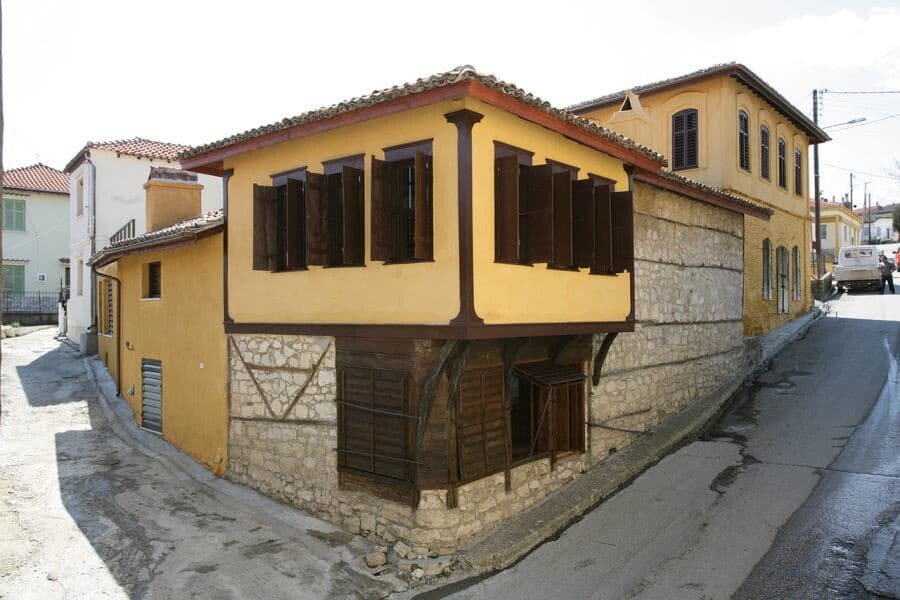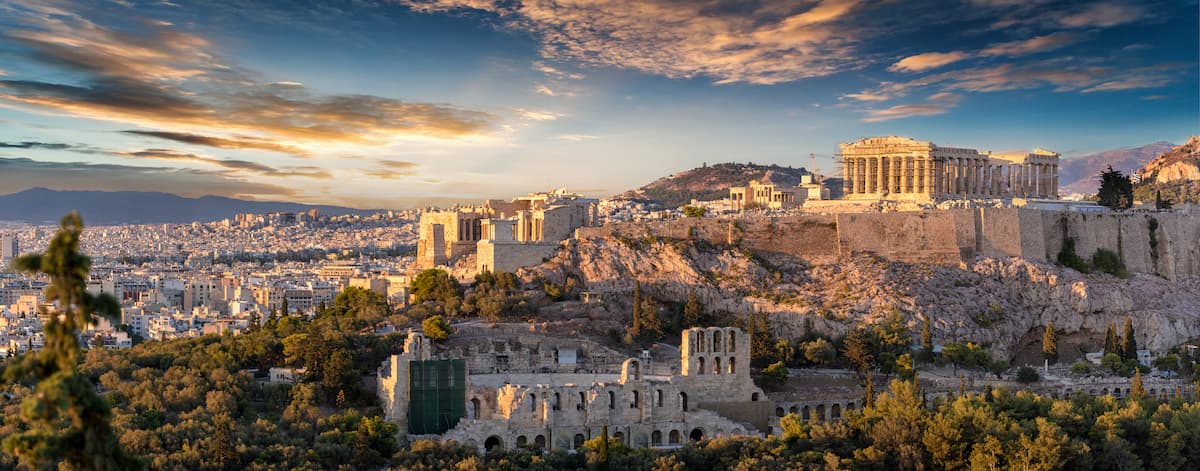The town of Soufli lies to the northeast of Alexandroupoli., with Evros River just 500 meters from the town center.
Soufli is largely known for its silk industry, which was developed there in the mid-19th century. Until the start of the 1980s, many of its residents were engaged systematically in raising silkworms (sericulture), but a variety of factors led to the city’s decline over time. In recent years, serious efforts have been undertaken to restore the city to its former heights through sericulture.
Gastronomy
The food of the inhabitants of Evros region used to be simple and was made from local products. Vegetables were the basis of food in the summer, while in winter and after the Christmas holidays, when pigs were slaughtered, their preserved meat was a key part of the diet.
A typical winter delicacy of the inhabitants of Evros is karma, which is found throughout Thrace and eastern Macedonia, and is an ideal accompaniment to ouzo and beer varieties. It is cooked in the pot or in the oven with eggs, pasta, potatoes and legumes. Try it cooked with gigantes (‘giants’: large beans, akin to lima beans) in the oven, seasoned with orange peel and cumin seeds.
“Babo” is purely a Christmas food. It consists of sausage stuffed with pork entrails, finely-chopped meat (nowadays minced meat), pieces of liver, rice, chopped leeks and spices, and is cooked in a ‘giouvetsi’. According to tradition, it got its name from ‘babo’, a local word for ‘grandmother’. Just as grandma is old and on her way to the end of life, “babo” is eaten at the end of the year.
Barbara
Barbara is a typical traditional cake of Thrace and is prepared on the day of the feast of Santa Barbara (December 4). The way it is prepared has many archaic elements and is reminiscent of “panspermia”: they use wheat, almonds, raisins, walnuts.
Soufli, apart from its silks is famous for its wine, and especially for its fragrant tsipouro. The people of Soufli have planted their vineyards on medium-altitude mountainsides. It is worth taking a visit to see their passion to cultivate them.
Every November a Tsipouro Festival takes place and gathers a large number of visitors an event not to be missed if you are in the area.
On the feast of the Four Martyrs (March 9), laggites (a type of crêpe) are prepared throughout the region. Thin dough is poured on a “satsi“, a round smooth thin stone plate that is placed over a strong fire from wood, which is overheated and has been scrubbed with a piece of onion. It was usually paired with petimezi or sugar.
During the hot summer days, refreshing “tarator” (tzatziki) is appreciated.
Petoura or gioufkades is a thick filo sheet of pastry made from dough with a rolling pin. In addition to flour and water, milk and eggs are added. The filo is then cut into oblong pieces, which were dried in the sun and stored in special bags.
Bligouri or Bulgur: It is boiled fine wheat dried in the sun and crushed in a hand mill. Cooked either alone (like pilaf) or with various meats. It is delicious with chicken.
Fish
The area of the Thracian Sea around Alexandroupolis and the mouth of the Evros river are amazingly rich in catches, you will easily appreciate this from the wide variety of fish meze and seafood in the fish taverns and the fish auction, which is one of the largest in Greece.
The most popular fish are the fanaoures (monkfish), batos (a kind of skate), the red mullet, the sardine and the large striped shrimp. Nowadays, sturgeon is rarely fished. In the past, their eggs were used to prepare caviar.
Because of Evros river, freshwater fish are abundant in the area and have a special taste. The carp here is called sazani, the gulianos, the largest predatory river fish, can reach 30 kg / 66 lbs, while the sea bass and kokkinofteres of Evros are excellent grilled or fried. The roe of sazani and goulianos become wonderful caviar meatballs.
Traditional recipes of Evros
Peinirli, and kichia, (a kind of a baked cheese filo pie)
Meat pita, galatopita almiri (savoury) on Holy Monday, galatopita glikeia (sweet), stegnopita (similar to hortopita with filo where rice is added) on Shrove Monday,
Rice pita made by the bride on the 3rd day of the wedding Sunday,
Katsiki kapama with plums, at weddings and celebrations,
Souglitses, (calf heads) always on Christmas,
Pork with baked potatoes, tigania, boubari (a traditional sausage) festive recipes,
Lamb with parsley in spring,
Katsiki kapama on Easter,
Meatballs with onions in the oven (food of the harvest),
Tsitsilato, a soup offered on Good Saturday at midnight, made with vegetables and the lamb’s head
Katafiotiko (lamb cooked in a clay pot with onions garlic, peppers, tomatoes),
Dry white onions stuffed with minced meat at engagements and weddings,
Quinces stuffed with minced meat (food for weddings),
Quinces ladera (cooked in olive oil and tomatoes), hen with chestnuts, hare stifado, carp plaki, eel, Lenten giaprakia, rufteinio bread on Good Thursday, the 15th of August in weddings and memorials.
Aubergines and tursi peppers, dolmadakia, gutlemedes (fried pies stuffed with local feta and flavored with mint), golio (a pumpkin pie without filo), Samothrace stuffed goat, rooster with bulgur in the pot, and much more.
Sweets: giaourtopita (yoghurt pita), retseli, krana (Cornelian cherry) fruit as spoon sweet, kourabie with walnuts, katsamaki (a porridge with corn flour and tahini), baklava, green walnut spoon sweet, ariani or airani a cold yogurt drink with cold water that sometimes contains salt.




